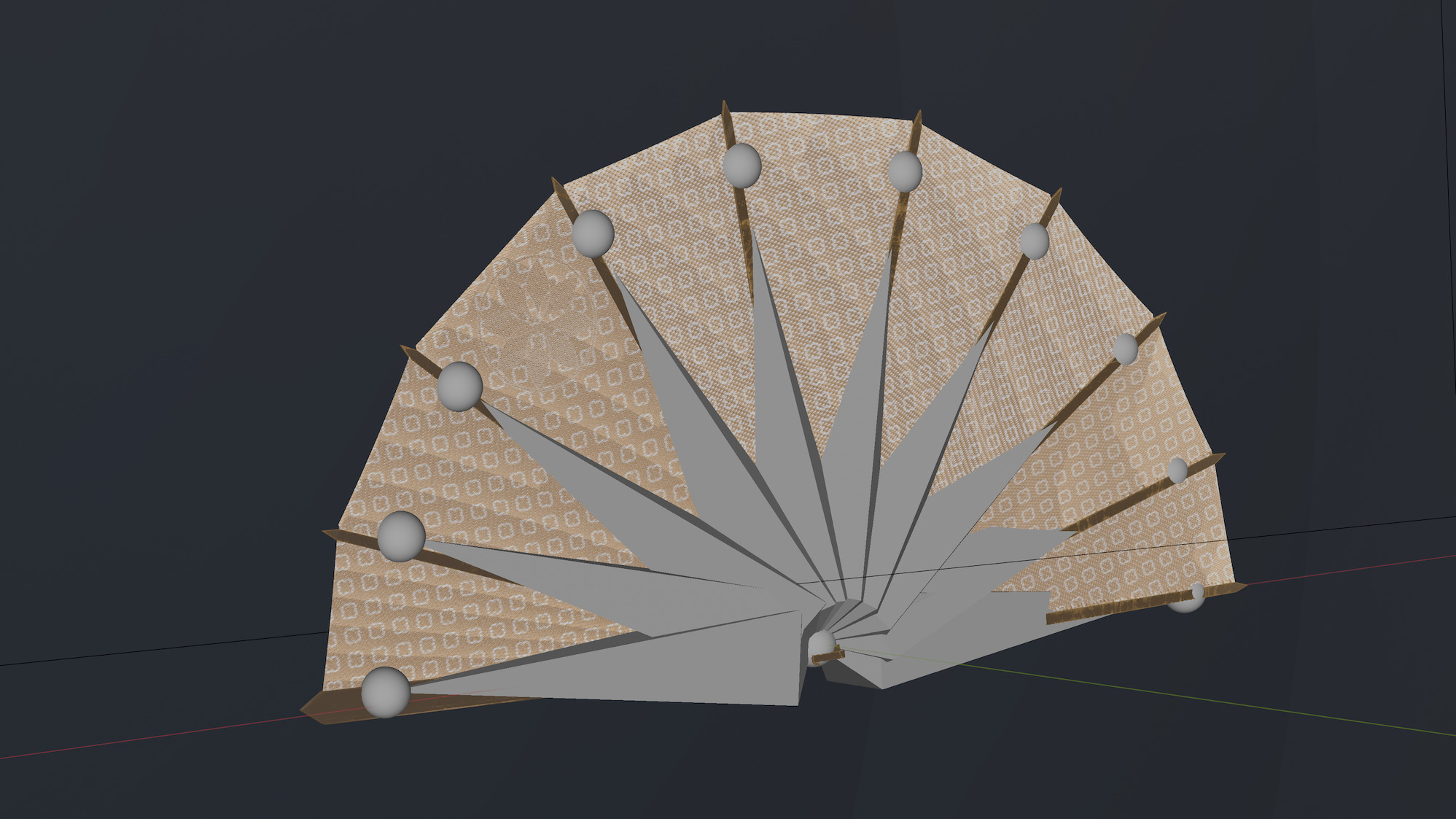
Tessen - Japanese war fan Low-poly 3D model
The Japanese war fan, or tessen (Japanese: 鉄扇,てっせん, romanized: tessen, lit. 'iron fan'), is a Japanese hand fan used as a weapon or for signalling. Several types of war fans were used by the samurai class of feudal Japan and each had a different look and purpose.
War fans varied in size, materials, shape, and use. One of the most significant uses was as a signalling device. Signalling fans came in two varieties:
- a folding fan that has wood or metal ribs with lacquered paper attached to the ribs and a metal outer cover
- a solid open fan made from metal and/or wood, similar to the gunbai used today by sumo referees.
The commander would raise or lower his fan and point in different ways to issue commands to the soldiers, which would then be passed on by other forms of visible and audible signalling.
War fans were also made as weapons. The art of fighting with war fans is tessenjutsu.
One particularly famous legend involving war fans concerns a direct confrontation between Takeda Shingen and Uesugi Kenshin at the fourth battle of Kawanakajima. Kenshin burst into Shingen's command tent on horseback, having broken through his entire army, and attacked; his sword was deflected by Shingen's war fan. It is not clear whether Shingen parried with a tessen, a dansen uchiwa, or some other form of fan. Nevertheless, it was quite rare for commanders to fight directly, and especially for a general to defend himself so effectively when taken so off-guard.
Minamoto no Yoshitsune is said to have defeated the great warrior monk Saitō Musashibō Benkei with a tessen.







